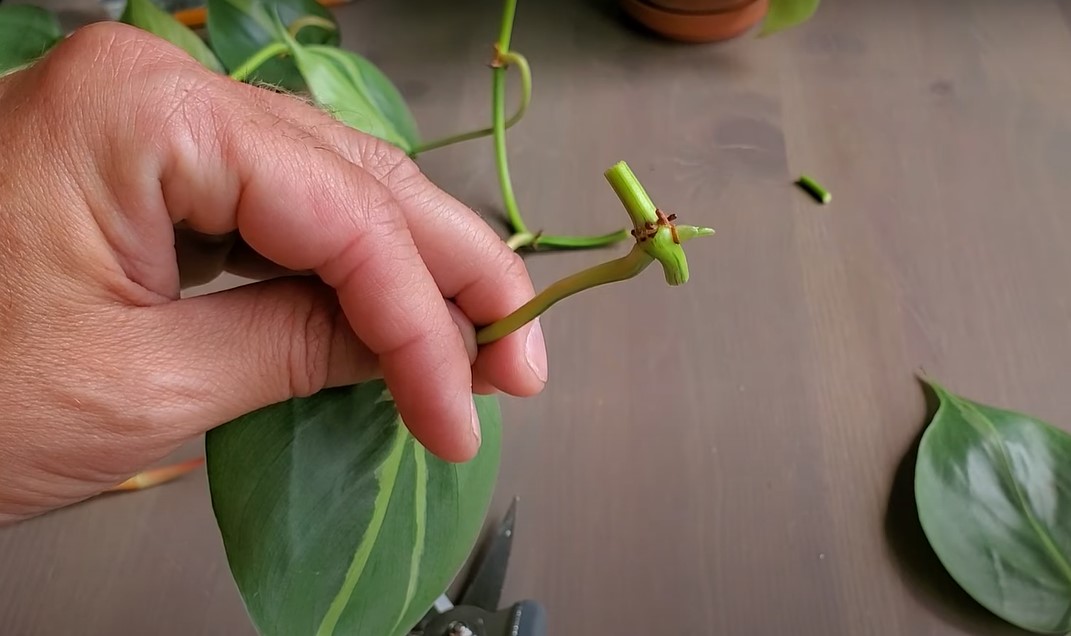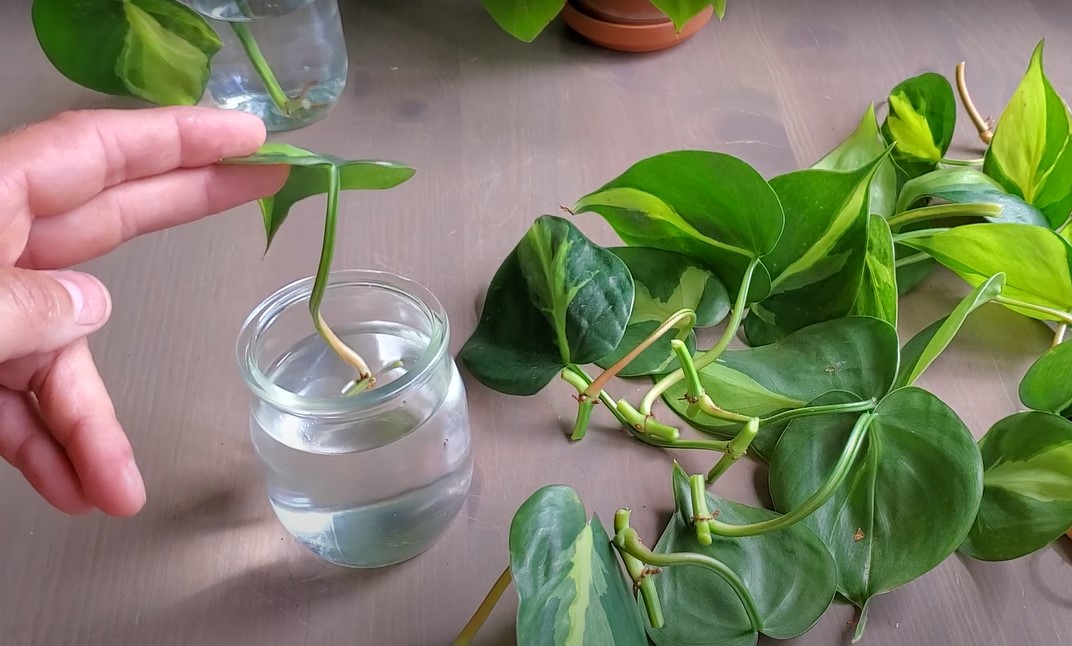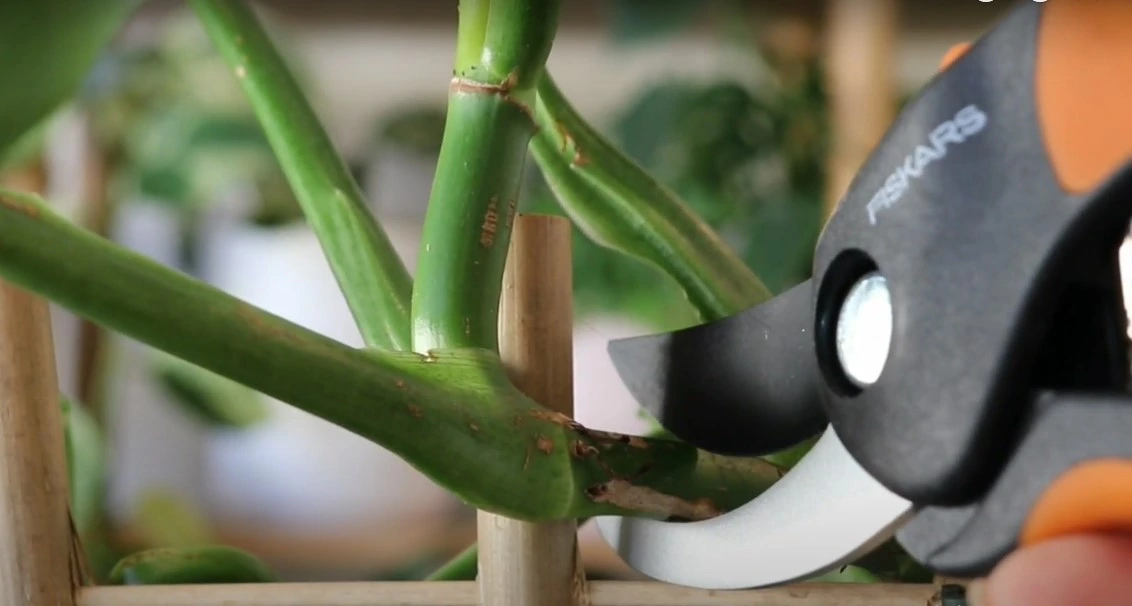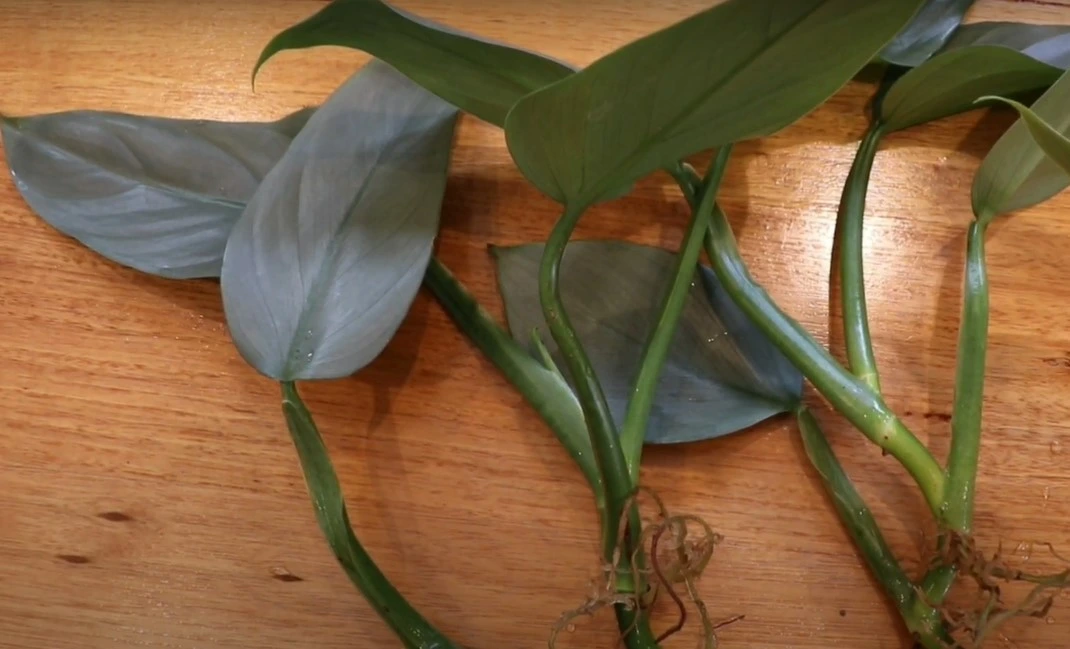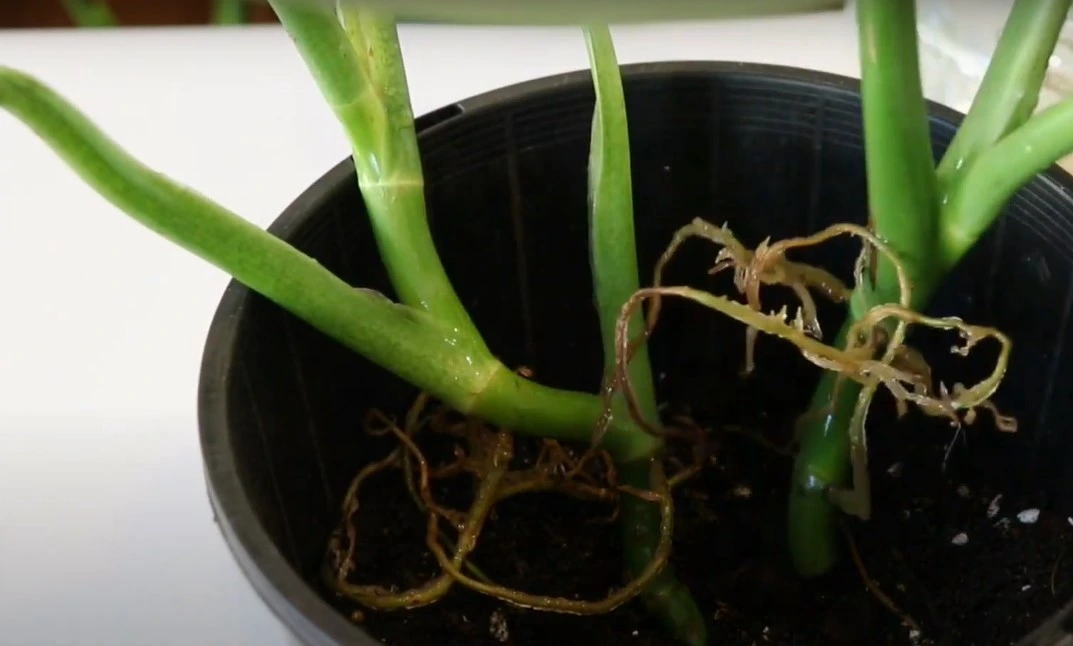Philodendron is a large genus of big-foliage flowering plants from the Araceae family. Its vibrant green leaves give this species its true value as an ornamental plant.
Philodendron is also known as an elephant ear due to its unique shape. There are several types of wide-leaf species are included in this single species.
However, the utmost categories are adaptable to various types of climates. Thus, you can grow a philodendron plant anywhere in your house, whether it is an indoor garden or an outdoor yard. Let’s take a quick look at how to grow a philodendron at home without any difficulties with these smart acquaintances-

Why Are My Philodendron Leaves Turning Yellow And Falling Off?
A philodendron plant is appreciated for its green, shiny, and big foliage. if those leaves lose their shade, shine, or even drop off the stem, how would the plant hold the same significance before?
But unfortunately, sometimes, this happens, and without providing all essential growing needs, your plant may start having yellow leaves.
These unhealthy yellow leaves soon fall off the plant, if you don’t apply any recovery method soon. Here are some important notes in this regard-
Reasons
- Insufficient light or poor sun exposure; when you put the planter away from the bright light or put it under direct sun for long
- Lack of nutrient supply, if you don’t feed your plant accordingly in time with the proper NPK ratio
- Root rot, when you use clay-based soil or sow the plant in a poor drainage pot or it has root bound
- Untreated pest Infestation, if you don’t pay attention to your plant for the pest infestation and don’t apply any remedy soon
- And improper watering, when you water your plant too frequently or after the soil is extremely dry
How to Fix
- Put the plant or sow the philodendron plant in a spot where it can get 7-8 hours of bright light through indirect sun exposure
- Fertilize your growing plant responsively, especially during the peak months like spring and summer with a balanced fertilizer, and don’t forget to make the soil fertile enough during the plantation
- Use the planter and the potting soil with excellent drainage quality. Take a planter that is adjustable with the root size of your philodendron plant to avoid root bound
- Look for any kind of pest or bugs infestation cautiously every few while and apply the possible remedies as soon as you detect one on your plant
- And water your plant only when the top surface of the soil turns dry and the plant seems thirsty, that should be once every 7-9 days.
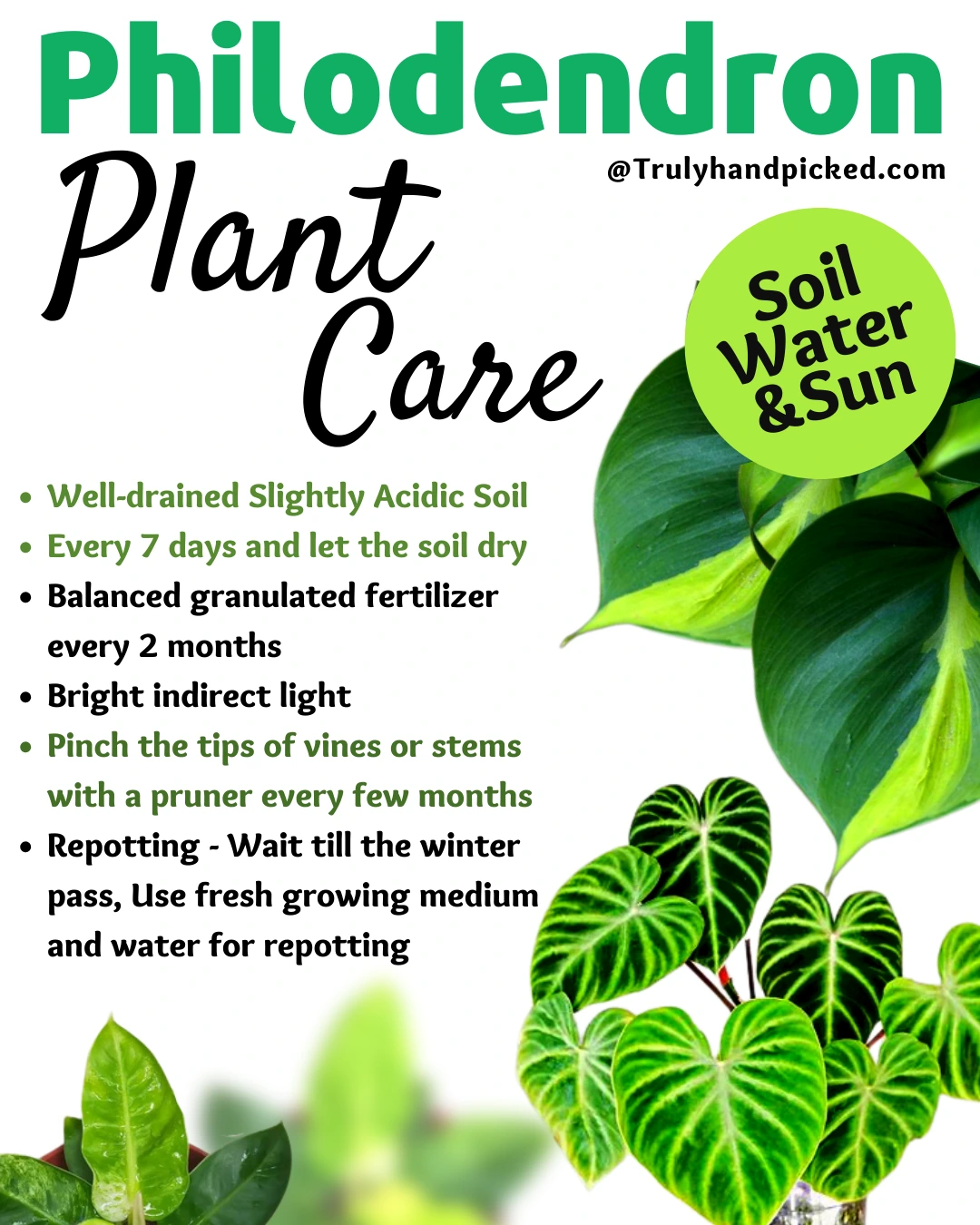
How to Care for Philodendron
Soil: Philodendron plants thrive well in loose and well-drained soil that is rich in organic matter. Prepare the potting mix with the peat moss-vermiculite base and keep the pH level slightly acidic.
Water: This plant has moderate water needs. Hence, water your plant every 7 days and let the soil dry a little between watering. You need to water your growing philodendron plant every week during its peak seasons, like summer and spring.
Fertilizer: Feed your philodendron plant attentively during the growing months in spring and summer with a balanced granulated fertilizer in a 20-20-20 NPK ratio. For the normal seasons, follow the fertilization schedule every 6-8 weeks steadily.
Sun Exposure: This perennial plant thrives best under the sun with partial shade. So, try to provide your plant filtered sunlight to cater to bright light sources but indirectly. You can use a canopy to provide proper shade for outdoor philodendron plants, while indoor ones would do best in the west or east-facing windows.
Climate: The best-growing temperature for a growing philodendron plant is between 65° to 78°. Don’t let the climate cool down than 60° F, even during the night. This plant also needs high humidity in a warm climate. So, keep the humidity level high in the room and mist the leaves of your outdoor philodendron plant weekly.
Pruning: Philodendron plants are quick-growers. Philodendron plans, especially the species with vine stems need consistent pruning sessions. Pruning will encourage the foliage to get bushier. Pinch the tips of vines or stems with a pruner every few months, once you feel that the plant turns shaggier.
Repotting: Repotting is equally necessary for such bushy perennial plants. Wait till the winter pass and your plant have completely overgrown the current planter. Then, select one-size bigger pot than the previous one to do the repotting process. Use fresh growing medium and water thoroughly after the replantation.
Pests and Bugs: Spider mites, aphids, mealybugs, scales, fugal gnats, whiteflies, springtails, etc. are some common pests and bugs you may see around your philodendron plant often. Try to get rid of them immediately with effective home remedies, before their attack gets fatal for your plant.
How to Propagate Philodendron: In Water & Soil
The vining species of philodendron are easier to propagate than the other species. However, you can regrow a philodendron plant with any growing medium by following some easy-to-follow tips we are discussing below-
Learn more about philodendron heart leaf propagation in water -> Youtube Video.
Propagation in Water:
- Find a fresh stem about 4-6 inches and with some newly-grown leaves on it
- Trim that offset out with a clean shear just below the node section
- Pluck off the leaves from the bottom part and put them in a jar of water
- Make sure you are using only filtered or distilled water for this course
- Let the cutting submerged in the water for a couple of days and keep the node part below the water level attentively
- You can change the water every 5-7 days but do it very carefully
- Place the jar in a warm spot with indirect sunlight and wait for the new shoots
- You can find that new roots will grow within a couple of weeks
- Wait until the root reaches a decent length of 2-3 inches
- Then, simply replant it in a planter and let it thrive naturally.
Learn more about philodendron silver sword propagation in soil -> Youtube
Propagation in Soil:
- To do the procedure, take the cutting similarly and prepare a planter to sow it
- Prepare the planter with perlite, peat moss, and normal potting soil
- Apply a mild amount of organic matter to balance the pH level acidic
- Plant the cutting into the soil and water it carefully with a sprayer until excess water starts draining
- Place the planter in a suitable spot as we mentioned before and wait for the new shoots
- The new stem will grow from the top within a couple of weeks, then you need to repot it in a bigger plater accordingly to give it the best thriving circumstance.
Are Philodendron and Pothos the Same?
Philodendrons and pothos are quite similar in look but they are different species from different agricultural families. Besides, they have very thin resemblance differences which are hard to find. However, you can recognize a philodendron and a pothos plant specifically, if you know their apparent differences. Let’s find out some, in this regard-
- Philodendron has spread to vine with a cataphyll with a thin and way sheath; while pothos plant extends to the stem and grown with an unfurl texture
- New foliage of philodendron has a pinkish to brownish tint. Leaves of philodendron plant turn greener gradually with maturity, while pothos leaves grow in a light shade and initiate with pale green shade without any other colorful hue
- Philodendron plants have comparatively thinner stems than the stems of the pothos plant
- Stems of a philodendron plant contain a brownish hue, while pothos stem grows in a pale green shade
- And roots of philodendron ariel roots thrive in cluster spindly, while the roots of the pothos plant are thick nubs, emerging n a single root line from the node.
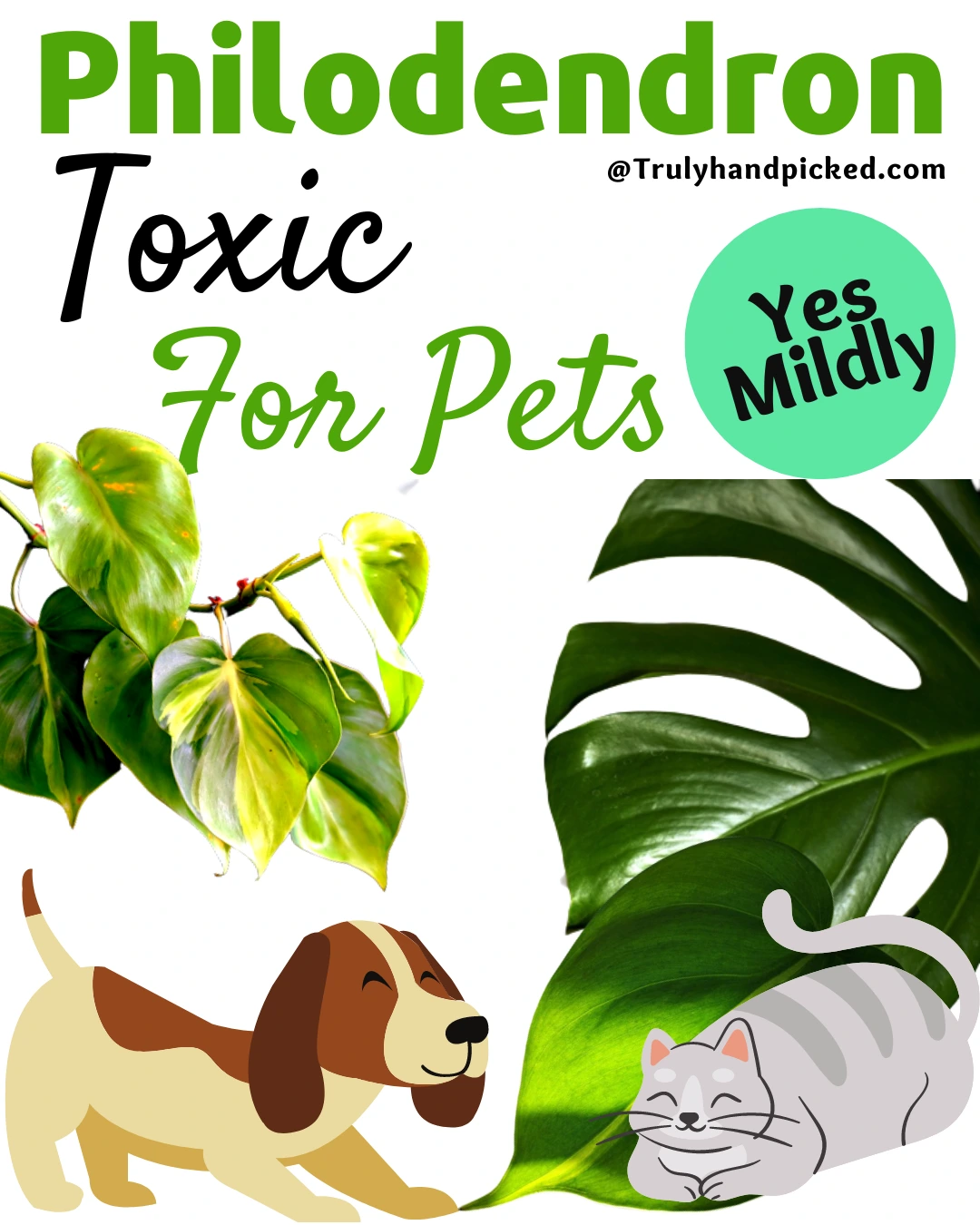
Is Philodendron Toxic to Pets?
Some species of philodendron like fiddle-leaf, heart-leaf, or Swiss cheese philodendron are mildly toxic to the mammal including all our house pets. The toxic elements found in a philodendron plant could spread with skin contact. But you must avert your pets from ingesting any part of this plant to keep them safe.
Whys Is This Poisonous?
This plant also contains the toxic element calcium oxalate. When this toxic property gets into the stomach of an animal, it provides chemical reactions to the mammal, it ingests.
What Are The Reactions:
- Oral irritation
- Mouth pain
- Swelling on the lips and tongue
- Irritation on the swallowing track
- Extreme drooling
- Vomiting
- Swelling eyes
- Excess tearing
- Upset stomach
- An ulcer in the cornea
How to Deal With This?
- Wash the eyes or the mouth of your pet with the flush of clean water
- You can use cold water as well to remove the particle of calcium oxalate more clearly
- Force your pet to vomit in every possible way
- Take your pet to the nearest veterinarian’s hospital
- Go for some serious diagnosis to find out the amount your pet has ingested
- And ask for the clean-up of mouth as well as the GI tract effectively to save your pet from reaching a fatal outcome.
Once you bring back your pet home after it is healthy again, try to keep the philodendron away from the reach of your furry friend methodically.
